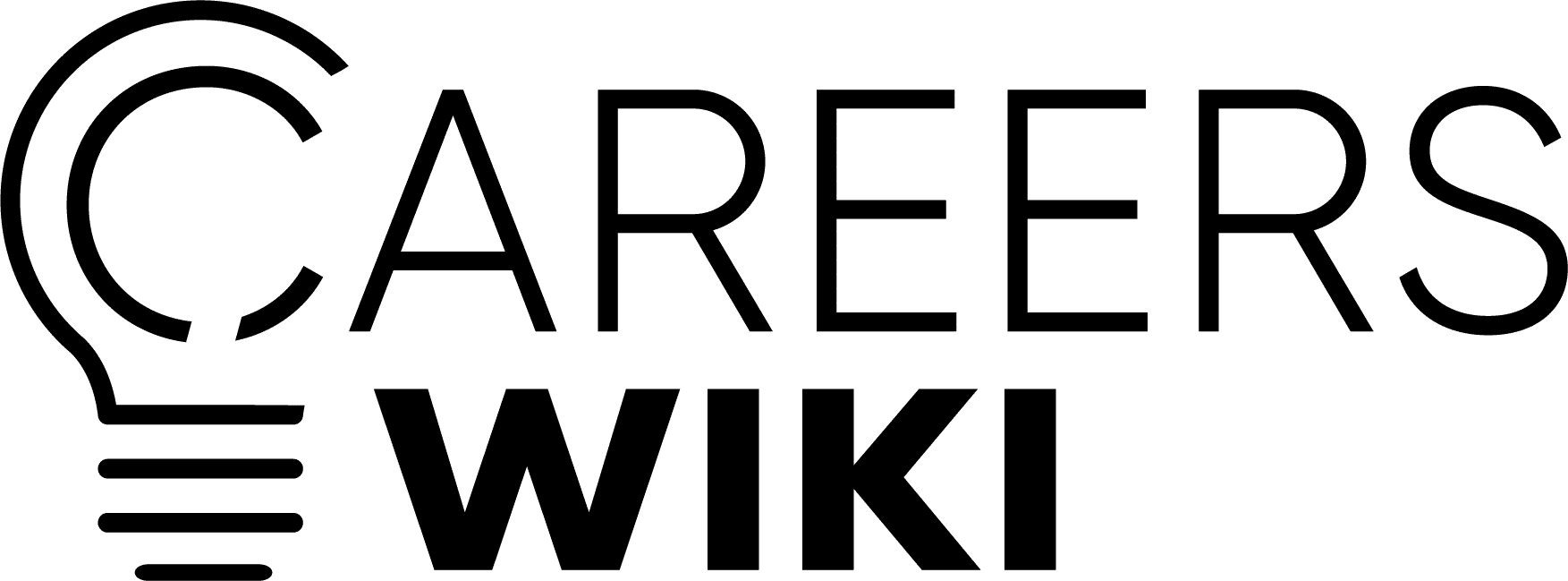School is back in session which means the dark clouds of tests and exams are looming on the horizon.
For many, test-taking produces major anxiety which is a barrier to academic success.
According to the American Test Anxieties Association, approximately 20% of students experience test-taking anxiety, and test-taking anxiety sharply increases during grades 2-4 [1].
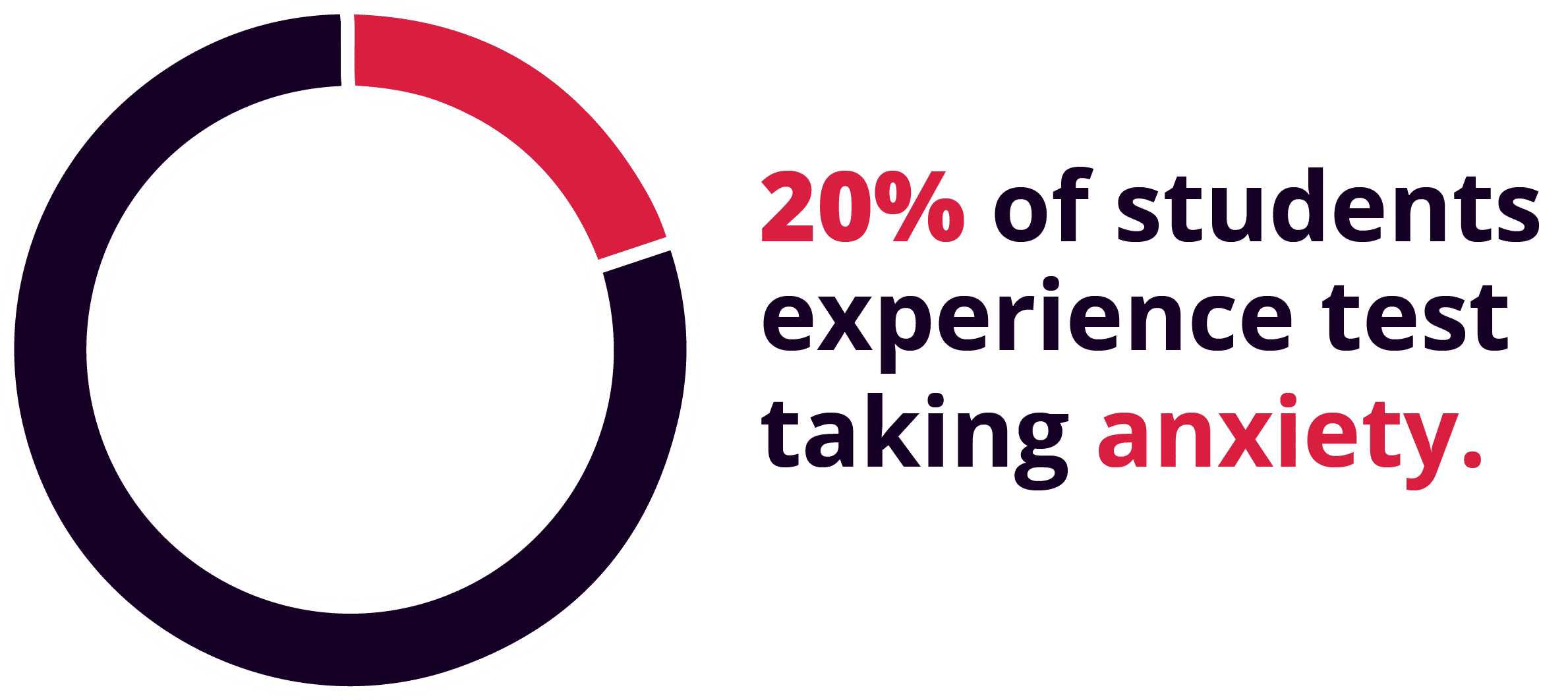
You Might Also Like:
In educational psychology circles, it is widely accepted that poor pre-test preparation is one of the major contributors to test-taking anxiety [2].
Those who do not take time to study properly for an exam are more likely to experience distress when confronted with information they don’t know, which produces test anxiety and subsequently lowers academic performance.
While this may seem obvious, there are debates in scientific communities on the direction, magnitude, and confounding factors of the relationship between study habits and test-taking anxiety.
However, the general consensus is that proper study habits are a good way to reduce test-taking anxiety and increase information retention [2].
The keyword here is “proper.”
Simply reading a textbook is not necessarily a good study habit.
Proper studying is more than just rote memorization. It involves practice and active learning.
Further, proper studying involves managing your cognitive resources and equitably distributing them between tasks.
Just like pushing a large boulder is not a good way to move it, going all-in with cognitive effort will get you nowhere. In keeping with the boulder analogy, you need something like a lever or ramp to make it easier to move. Those are the study habits.
We will get into those specifics in a minute. First, though, we are going to take a quick look at the history of learning psychology and address the big question “what is learning?”.
When talking about study habits, it is important to understand how the human mind learns things.
That way, you can take advantage of natural cognitive mechanisms to make learning and retaining information more effective.
We will then move on to specific study tips and discuss the scientific evidence of their efficacy.
As a quick warning, this article will be rather long and in-depth. Feel free to skip the intro parts to get to the study tips.
A Brief History of Learning Psychology
The question “what is learning?” started with the Ancient Greeks.
Plato famously described learning as a process of recollection.
According to Plato, when humans learn new knowledge, they are merely recalling information that they already were in possession of.
Plato justified this position with an argument meant to show a paradox inherent in the idea of humans acquiring genuinely new knowledge. If humans did not know something, then they would not be able to question their lack of knowledge about that thing.
So the capacity to question something shows that the knowledge is already there. Therefore, all knowledge lies already contained in the mind, and learning is just a form of remembering what is already there.
Understandably, Plato’s theories of learning are not widely accepted today, though the spirit of Plato’s pedagogical method remains in the practice of Socratic dialogue.
Whereas Plato held that all knowledge is innate, the English philosopher/naturalist John Locke (1632-1704) held the opposite position.
Locke thought that all humans are born as a tabula rasa (Latin: “blank slate”) upon which experience impressed knowledge.
According to Locke, the human mind enters the world without any kind of inherent structure and the myriad of experiences we have impress themselves on the mind and eventually coalesce to form complex abstract concepts.
Under this model, learning occurs only via the inculcation of past experiences.
These two classical epistemological positions are called rationalism and empiricism and, although neither are accepted today in their full form, these two views on the nature of knowledge and human learning have greatly affected and influenced the development of modern educational psychology.
Johann Herbart (1776-1841) is considered by many to be the father of modern educational psychology.
Herbart set the modern stage for learning psychology by conceptualizing learning as a dynamic process that occurs between student and teacher.
Whereas previous classical theories saw learning as a more or less passive process, Herbart’s learning classification scheme defined learning as a function of previously existing knowledge.
Herbart introduced a 5-step formal pedagogical method that has been highly influential:
- Review material learned by the student
- Prepare the student for new material by giving an overview of the new topics
- Present the new material
- Related the new material to the old material
- Show students how to apply the new material
The purpose of Herbart’s 5-step process was to create a framework for the moral and intellectual development of students.
What is Learning?
The simplest functional definition of learning and one that is often offered in psychology textbooks is a change in behavior due to experience (Lachman 1997) [3].
In other words, learning is whatever psychological processes map experience to behavior.
This simple definition is often criticized for being simplistic and inaccurate.
Namely, it seems to imply that changes such as a jolt from hearing a loud sound or pain count as learning.
It also seems to ignore that learning does not always produce a change in behavior.
Further, this definition does not seem to account for the various mental processes and states that affect learning such as memory, emotions, personality, and different sensory modalities.
One of the difficulties of defining learning is that the term “learning” likely does not refer to any one single mental process or activity.
According to R. M. Smith (1984), the term “learning” is often used in 3 distinct ways: (1) the acquisition and mastery of what is known about something, (2) the extension and clarification of the meaning of one’s experiences, or (3) the intentional processes of testing ideas to solve problems [4].
An adequate definition of learning for our purposes is given in Ambros et. al. (2010), where they define learning as “a process that leads to change, which occurs as a result of experience and increases the potential of improved performance and future learning.” [5]
This definition of learning places emphasis on the procedure and cognitive dimensions of learning.
Learning is not just a description of learning new facts, but a cognitive process that has many different moving parts and mechanisms.
If one understands learning as a process and how that process works, they can figure out how to best influence that process.
Scientific Models of the Learning Process
In contemporary psychology, there are three dominant learning process models: behaviorism, cognitivism, and constructivism.
We will examine each of these models.
Behaviorism
Behaviorism comes from the works of B. F. Skinner (1904-1990) and his concept of operant conditioning.
Behaviorists more or less accept the blank slate view of the human mind proposed by Locke.
Behaviorists believe that learning occurs when changes to behavior are acquired by associations between stimuli and response.
The benefit of behaviorism is that it is based on objectively observable changes in behavior.
Behaviorists believe that learning begins when a learner reacts to some stimulus in the environment.
Consequences that reinforce the desired behavior are introduced after the desired behavior.
Over time, this behavioral pattern becomes virtually automatic. The change in behavior signifies that learning has occurred.
Some study applications of a behaviorist learning theory include:
- Rote memorization
- Repetition
- Receiving passing/failing grades
- Verbal reinforcement.
The key idea behind behaviorism is that learning should be accomplished primarily through the modification of behavior.
Whenever teachers reward or punish student behaviors (good/bad grades, for example), they are operating on a behaviorist learning scheme.
Although behaviorist models are useful for some study applications, such as the acquisition of basic arithmetic skills [6], they seem to leave out important cognitive elements of learning, such as creativity, exploration, independent problem-solving, and making connections to other domains.
Cognitivism (Information Processing View)
According to cognitive models of learning, learning occurs primarily in the form of information processing that occurs after the uptake of sensory data.
Whereas behaviorists focus solely on the externally observable connection between stimuli and response, cognitivism focuses on the mental machinery inside the individual learner’s head, and how changes in those mental processes change the acquisition and retention of knowledge.
Changes in behavior are important for cognitive accounts of learning, but behavior is seen as an indicator of change in the learner’s mind.
The school of cognitivism traces its roots to the work of French psychologist Jean Piaget (1896-1980).
According to cognitivism, the locus of learning is change in the cognitive modules of the mind.
Learning is about reorganizing experience and having the reorganization reflected in memory, skills, and future behavior.
Cognitive approaches to learning focus on the learner playing an active role and seeking methods to process and relate information compared to what is already known.
Thus, cognitive approaches to learning tend to focus on the internal processing of information.
Some study applications of the cognitive model include:
- Classifying and systematizing information
- Linking new concepts to old ones
- Discussing real-world examples
- Independent problem solving
- Using analogies and images to convey concepts
- Mental organizational strategies
The main intuition underlying cognitive models of learning is the idea that the way knowledge is structured influences its accessibility and understanding (Glaser & Bassok 1989) [7].
Cognitive approaches to learning attempt to influence cognitive processes to change the structure of the knowledge so it is more readily available for recall and synthesis.
Constructivism
According to constructivism, learning is the process of the learner constructing their own understanding and knowledge of the world by reflecting on their experiences.
For constructivists, learning begins when we encounter something new that must be reconciled with our old beliefs and experiences. In this sense, constructivism holds that individual humans are active creators of knowledge.
To learn we must ask questions, explore, and assess what we already know.
Learning is seen as an active process rather than the uptake and regurgitation of facts.
Constructivist learning and studying methods focus on applying their own knowledge to real-world situations.
Some constructivist learning applications include:
- Evaluating case studies
- Brainstorming sessions
- Research projects
- Group work
- Simulations
- Interactive Learning
Constructivism is often criticized by some educators as doing away with the importance of expert instruction and guidance. Rather, constructivism emphasizes the role that the learner themselves plays in creating knowledge during the learning process.
That is one reason why constructivists champion a Socratic method of learning, where learners are guided through their though via a series of leading questions meant to make them reflect on their own beliefs and justification for those beliefs.
Constructivism also differs in its goals. Rather than being focused on generating determinate answers, constructivist methods of learning are focused on individual intellectual development.
Learning can be understood not simply in terms of what new things the learner discovers, but the relative change between a past state of knowledge and a later state of knowledge.
Each of these models of the learning process contributes a piece of the whole picture that is learning.
They all have their strengths and weaknesses in application. So the proper study regiment will make use of the lessons derived from each model.
9 Tips for Studying that are Backed by Science
In this section, we are going to cover individual study strategies and techniques that will help you retain and process information.
We will also look at some of the scientific evidence and explanation behind why these strategies work.
A quick note: Do not take this list as a strict guide for studying. Every person’s learning habits are different so it is impossible to give a one-size-fits-all learning method.
Rather, view these tips as a list of “cognitive hacks” you can take advantage of to supplement your studying. In that sense, these tips are not about performing specific tasks while studying but cultivating a mindset and environment that is conducive to studying.
1. Know Your Learning Style
A learning style is not a particular ability but a preferred way of using one’s abilities to learn.
It is common sense that different people learn best via different modalities, which has led many psychologists to posit that there is a list of “learning types” or “styles” that capture salient features about how individuals learn best.
The idea is that if you know your learning style, you can present study materials to yourself in a format that best helps you learn.
Scientists have invented several typologies and taxonomical schemes to categorize learning styles that relate to several psychological and behavioral dimensions.
Coffield et. al (2004) present a meta-analysis that catalogs 13 different learning typologies [8].
A popular typology is the visual, auditory, kinesthetic, and reading styles of learning. While this typology have been influential and is often taught to educators, there seems to be little empirical evidence backing them up. A flaw with these sensory-based typologies is that they make no accommodations for the personality and cognitive abilities of individual learners.
An influential learning typology is offered in Kolb & Kolb (2013).
Kolb & Kolb offer a model of learning that characterizes 2 dialectic dimensions of grasping experience: Concrete Experience (CE), Abstract Conceptualization (AC), and 2 dialectic dimensions of transforming experience: Reflective Observation (RO) and Active Experimentation (AE) [9].
A learning style is the way that individuals navigate the learning cycle based on their preference for the 4 different learning modes.
An individual’s learning style can be conceptualized by the weighted preferences the individual gives to each learning mode.
The most recent version of the Kolb Learning Style Inventory 4.0 (KLSI) identifies 9 distinct learning typologies, based on unique patterns of individual learning styles.
These 9 groups are:
- Initiating – Places importance on action to deal with experience and situations. Involves active experimentation (AE) and concrete experimentation (CE).
- Experiencing – Finding meaning through involvement in experience. Involves concrete experience (CE) and a balance of active experimentation (AE) and reflective observation (RO).
- Imagining – Imagining possibilities by reflecting on experiences. Combines concrete experience (CE) and reflective observation (RO)
- Reflecting – Connecting experience and idea through reflection. Involves reflective observation (RO) while balancing concrete experience (CE) and abstract conceptualization (AC).
- Analyzing – integrating ideas into models and systems through reflection. Combines reflective observation (RO) and abstract conceptualization (AC).
- Thinking – Preference for abstract and logical reasoning. Draws on abstract conceptualization (AC) while balancing active experimentation (AE) and reflective observation (RO).
- Deciding – Using theories and models to decide on problem solutions and courses of action. Combines abstract conceptualization (AC) and active experimentation (AE).
- Acting – Focus on goal-directed action that involves people and tasks. Draws from active experimentation (AE) while balancing concrete experience (CE) and abstract conceptualization (AC).
- Balancing – Characterized by adaptability. Balances preference between the 4 learning modes concrete experience (CE), abstract conceptualization (AC), active experimentation (AE) and reflective observation (RO).
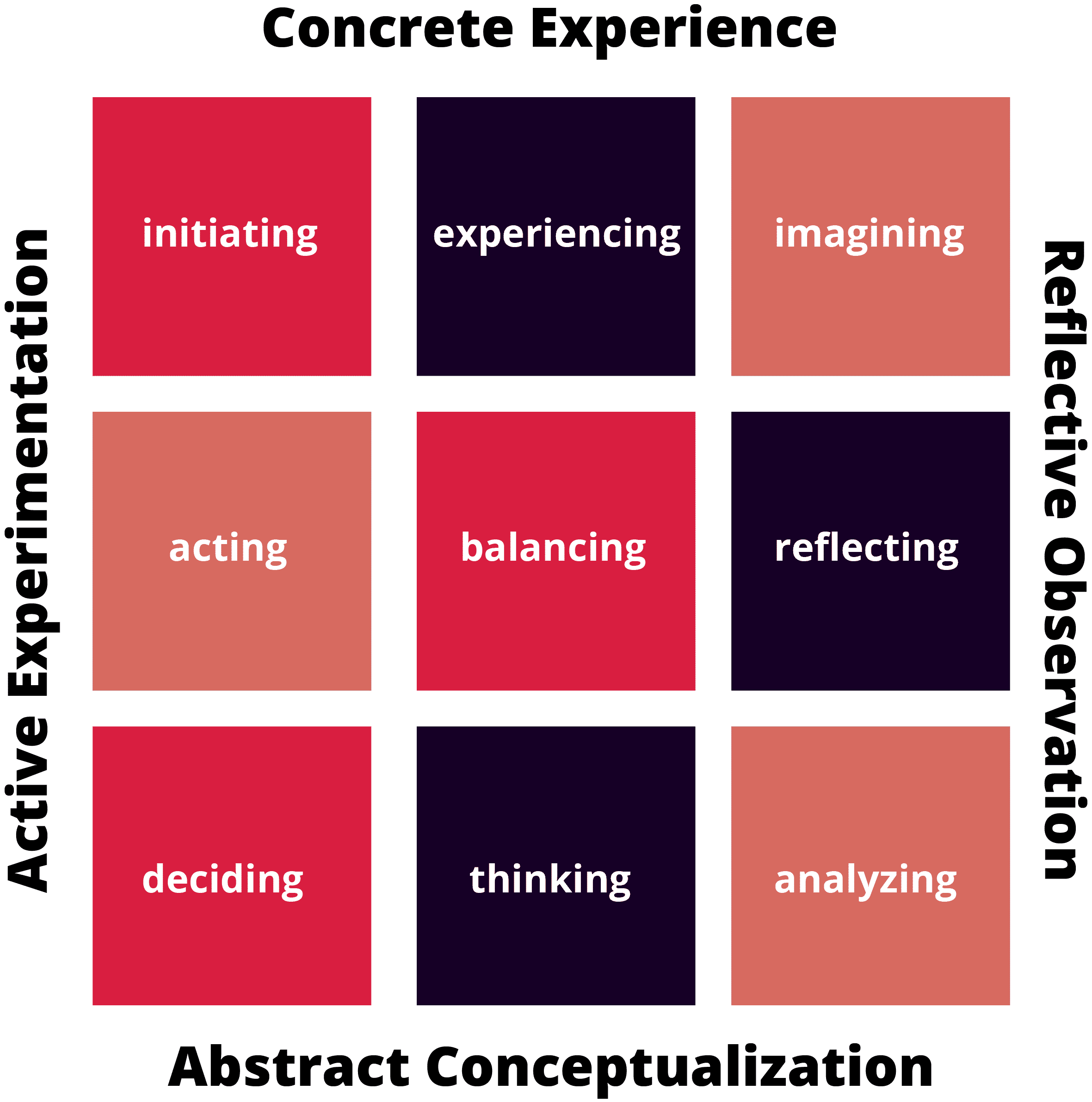
You can find a self-assessment version of the KLSI 4.0 here.
While this information should not be taken as gospel, after all, humans are very flexible in their learning patterns, it can help you get a good grasp of your preferred learning style which you can then tailor studying to.
For example, if you find that you are more of an Initiating learner, the proper study method may involve actively experimenting with concrete situations.
Alternatively, if you are an “Analyzing” type, you may study best through reading and reflection on ideas.
2. Space Out Your Studying
Studies on the effects of cramming on test-performance are pretty cut and dry.
While cramming might be effective in some limited circumstances [10], overall, cramming doesn’t help test scores and is even worse at engendering long-term understanding [11].
The reasons why cramming is ineffective are pretty obvious. The brain is like a muscle (technically it is not a muscle) and like any muscle, its performance can be effective by overuse.
When we learn, we literally change the anatomical structure of our brain by creating new connections between neurons [12].
The capacity of the brain is known as neuroplasticity.
In order to learn concepts effectively, these connections must be nurtured over time.
Cramming attempts to do in the short-term what takes the long-term.
It is well known that the brain is much better at encoding information in small intervals, rather than one large sitting.

Spacing out information uptake repeatedly trains your brain to improve those neural connections. So rather than stamping the information as a whole into your brain, bit by bit the information gets chiseled into your mind.
There is much experimental evidence for the existence of this “spacing effect.” Mozer et. al. (2009) introduce what they call a “Multiscale Context Model of Memory” that correctly predicted the degree of the spacing in several experimental settings.
According to their model, retention and recall accuracy can be expressed as a function of time passed between the first instance of instruction and the second instruction.
The researchers found that the so-called “retention function” has a characteristic curve that initially rises, hits a peak, then drops and plateaus.
For each curve, there is an optimal amount of time (called the intercession interval) between the first and second instructions at which information recall is the best.
According to the authors, optimal spacing can almost double information retention rates over massed practices [13].
Numerous studies confirm the results of the Multiscale model and we don’t have the space to cover them here.
Suffice to say, the scientific consensus is that spacing out studying is one of the better ways to improve information retention and a much better studying strategy than cramming.
3. Use Intentional Learning
Learning just to recall facts is a rather shallow way of studying.
While it may help you pass the multiple-choice question sections on your exams, focusing on fact recall alone is not very effective at producing long-term understanding.
A much better way is to approach learning a concept with the intention to teach it.
You should study a topic in a manner such that you plan to teach it to someone who knows nothing about it.
This kind of “intentional learning” is certainly an old idea, but has recently become an object of scientific study.
A recent influential paper by Netsojko et. al (2014) found that priming students with the expectation to teach class materials to their peers was associated with better free-recall of related passages and more correct answers about passages in later assessments [14].
Simply the expectation that they would have to teach something caused students to learn the material better.
Netsojko et. al offer some potential explanations of their experimental findings.
Their basic explanation is that expecting to teach puts students in the mindset of a teacher and in so doing they engage in more effective organizational strategies—such as weighing the importance of different concepts, focusing on main points, and critically examining how information fits together.
This kind of “relational processing” is thought to enhance information recall.
Encoding information by the relation between units of information rather than just the units of information could enhance recall by increasing the number of elements encoded into memory.
More broadly, “intentional learning” can be seen as any learning process in which learning is seen as the goal rather than an incidental outcome (Bereiter & Scardamalia 1989) [15].
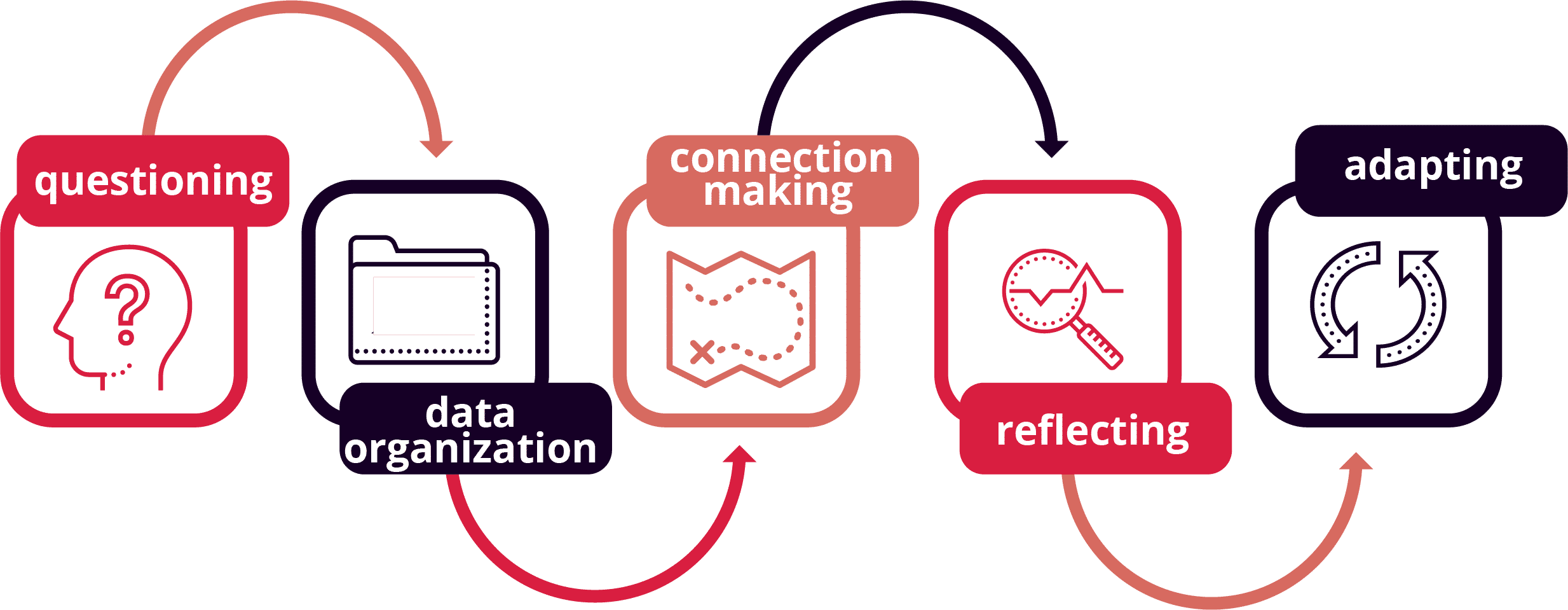
The key insight of intentional learning styles is to figure out what learning objectives facilitate the production of an organized systematic knowledge as opposed to knowledge that lets you just pass a test.
In practice, intentional learning is about giving yourself motivations to learn and actively engage in strategies that facilitate learning.
One way to do this is to seek out examples of real-life applications of the things you are studying and see if you can find ways to apply what you learn.
Learning with the intention to teach is a good method of intentional learning because it motivates you to understand the information in an organized and systematic manner.
If you have a willing friend or family member, study with the intention to teach the material to them at a later time.
4. Metacognition
Metacognition, sometimes called “thinking about thinking” consists of those higher-order cognitive processes that let us introspect and intentionally plan, observe, and assess our cognitive performance.
For example, a person is using metacognition when they notice that problem A is more difficult to solve than problem B, or that an answer they give seems implausible.
In other words, one can view metacognition as the capacity to monitor and regulate one’s learning.
The importance of metacognition was recognized in the days of the Ancient Greeks, as emphasized by Socrates’ idiosyncratic teaching method of asking students to introspect and reflect on the content and justification of their beliefs.
The point of this so-called Socratic method leading-question style is to teach students how to examine their own thinking and regulate their own cognitive processes.
Studies have shown that students who score high in assessments of metacognitive skillfulness are more apt to learn new information, particularly information at the boundary of their knowledge [16]. In other words, metacognition seems to help with the uptake of new knowledge, which is exactly what you need when studying.

When studying, try to engage in an active reflection of your studying. Ask yourself questions like “Do I understand the material? What was the main point of the previous passage? What ideas or concepts and I’m still confused about? What methods have helped retention? Which ones have not helped?”
Good studying does not happen by chance; it requires intentional practice and effort. You need to identify your strengths and weaknesses and modify studying accordingly.
One very potent method for increasing one’s metacognitive skills is to take a course in critical thinking.
Critical thinking courses teach students how to identify, evaluate, and construct arguments, how to organize thoughts in a logical manner, how to assess evidence, and how to monitor one’s cognitive processes.
These sorts of courses explicitly train students on how to use their metacognitive abilities to be more effective thinkers.
A 2019 multicohort longitudinal study of over 15,000 undergraduate students that enrolling in critical thinking and logic courses were associated with improved GPA, particularly for those students who began college with low academic performance [17].
Other studies have found that students with a high critical thinking disposition see better academic performance [18].
5. Get Some Exercise
For years, scientists and medical professionals have known that exercise protects against memory disorders like Alzheimer’s and other forms of dementia.
It has been shown that regular physical exercise stimulates the production of neuronal and vascular growth factors in the hippocampus and reduces the production of damaging free radicals [19].
So in simpler terms, exercise keeps the juices flowing through your brain so your hippocampus—the memory center of the brain—stays healthy and works well.
More generally, it has been found that regular exercise is associated with increased cognitive performance in healthy adults [20].
There is also evidence that seems to imply even one-off instances of exercise can boost immediate cognitive performance and information retention.
Van Donagen et. al. (2016) describe an experiment in which three groups were asked to memorize a series of picture-location associations. Afterward, one group immediately exercised, another exercised 4 hours later, and the third group did not exercise.
The researchers found that the group that exercised 4 hours after learning retained more information as opposed to the group that did not exercise.
Further, the 4-hour exercise group displayed greater hippocampal activity during delayed retrieval sessions [21].

Memory performance in %.
The explanation for these findings has to do with physical arousal.
Persistent long-term memory requires the successful stabilization and integration of memories after the initial encoding.
The consolidation process involves several neuromodulatory factors like dopamine, noradrenaline, and neurotrophic factors.
Moderate physical exercise has been shown to stimulate the release of the neuromodulatory factors which helps with long-term memory consolidation.
In practical terms, this means that scheduling a session of moderate exercise an hour or two after your study session can help you better retain information.
Further, incorporating a regular exercise routine into your daily schedule will positively affect your long-term cognitive development.
6. Get the Right Amount of Sleep
It is well known that sleep is important for memory consolidation.
Ripples of hippocampal activity during deep-wave sleeping periods have been shown to have a positive effect on memory consolidation.
Specifically, sleep seems to have the largest positive effect on procedural learning; i.e. the acquisition of certain motor and cognitive skills [22].
Several studies also have shown that sleep deprivation is associated with poorer academic performance.
A 2013 longitudinal study showed that among a cohort of 535 9th-12th graders, regardless of how much an individual studied per day, if they sacrificed sleep to study more they were more likely to perform poorly on future assignments and tests [23].
This problem is especially pronounced among older high school and college students who may have irregular sleeping schedules.

The important thing is not necessarily the amount of sleep you get but the quality of sleep.
Having a regular sleep schedule gets your body into a natural “cycle” which makes it easier to both fall asleep and wake up in the morning.
For instance, it is known that when sleeping, humans alternate between two stages: non-REM and REM sleep. Both non-REM and REM sleep seem to be important for different types of learning. Slow-wave non-REM sleep has been found to have a significant effect on declarative memory recall, and REM sleep seems to most influence procedural memory consolidation [24].
Studying ostensibly encapsulates all of the types of learning, so proper sleep is necessary to make your studying as effective as possible.
7. Get a Study Group
One of the good things about school is that you are surrounded by like-minded peers who are learning the same material as you.
While some may prefer to study alone, for others, studying in a group can be a huge benefit.
Decades of empirical work suggest that studying in a group can be much more effective than studying alone [25].
For example, students studying in a group can stop and discuss concepts to test each other’s comprehension.
You may think you understand an idea, but attempting to explain some concept to another person can be a way of gauging if you really know what you are talking about.
The presence of other points of view makes students more critically evaluate their own beliefs and better communicate them.
Group studying helps students clarify questions and details of the materials they do not understand.
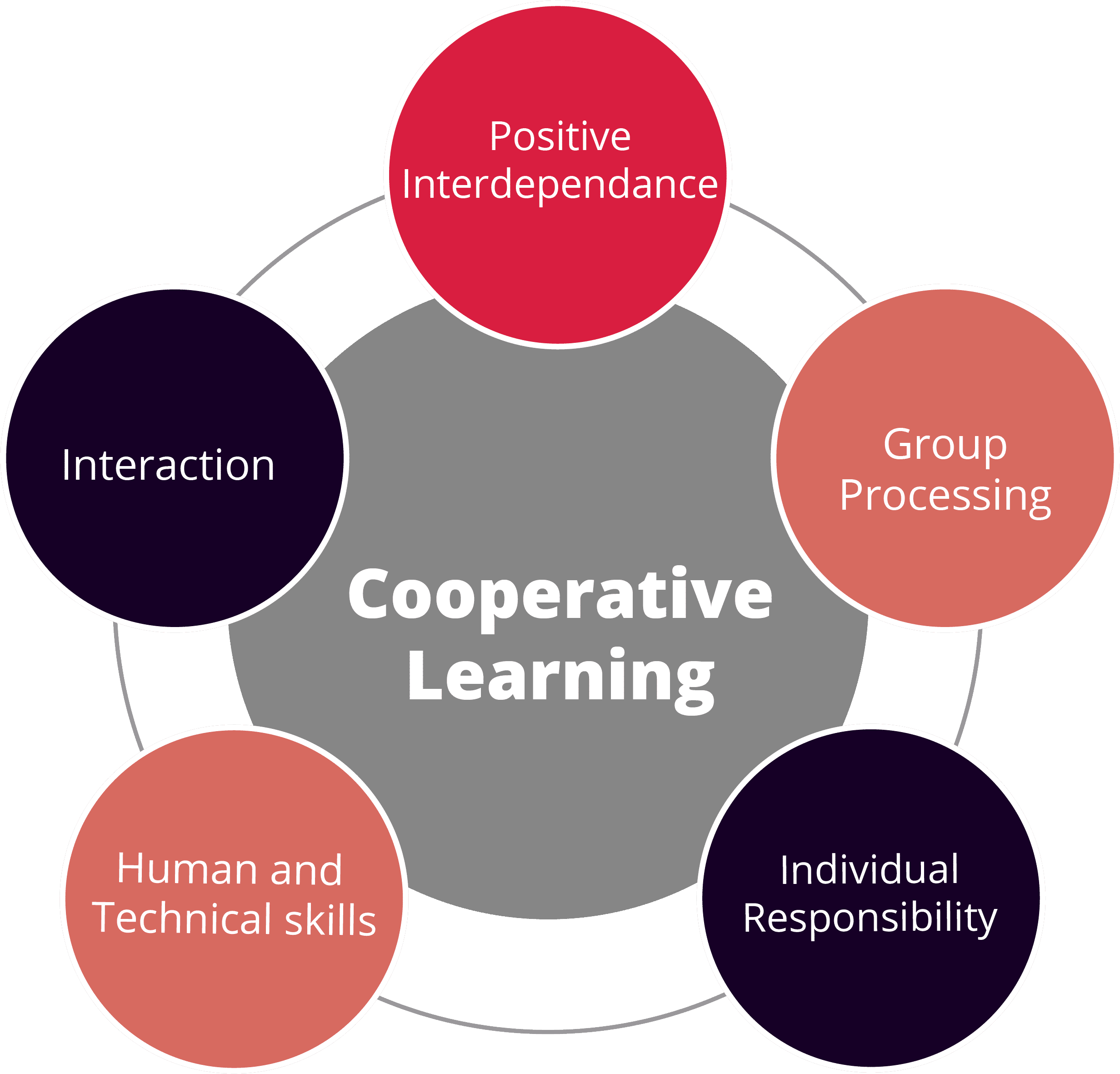
Also, group studying can turn studying from a lonesome and isolating experience into a more fun and social one.
Extroverted learners draw their creative energy from other people and may look forward to discussing class materials with other students.
Group study further helps students stay accountable. Other people are counting on them to study and learn the material, so they will have more motivation to learn.
Admittedly, the benefit of group study can be dependent on the kind of material you are studying. If you are just practicing math problems and working through problem sets, it may be best to go it alone, though it helps to have some extra eyes to check your work. If you are studying for something like a philosophy exam then group discussion may be the most effective way to learn the materials.
Of course, there are benefits to studying alone. Presumably, studying alone lends itself to fewer distractions as you don’t have to worry about study sessions turning into hang-out sessions. Studying alone also gives you complete control over the study environment which, in some cases, is almost as important as the study strategies you use.
Further, studying alone lets you take the material at your own pace. You don’t have to try to keep up with the rest of the group and you can give extra focus to topics that are most difficult for you.
8. Make Handwritten Notes
Taking notes on a laptop is increasingly more common as computers become more integrated into standard teaching techniques. However, many researchers have suggested that computer note taking is less effective than handwriting notes in terms of information retention and conceptual understanding [26].
The main reason seems to be the way the brain processes writing on a computer vs handwriting notes.
Specifically, it is suspected that taking notes on a laptop increases the tendency to merely transcribe a lecture or written text rather than processing the information in their own words with handwritten notes.
It is also believed that the particular act of handwriting further reinforces the concepts being encoded by associating them with some physical stimulus.
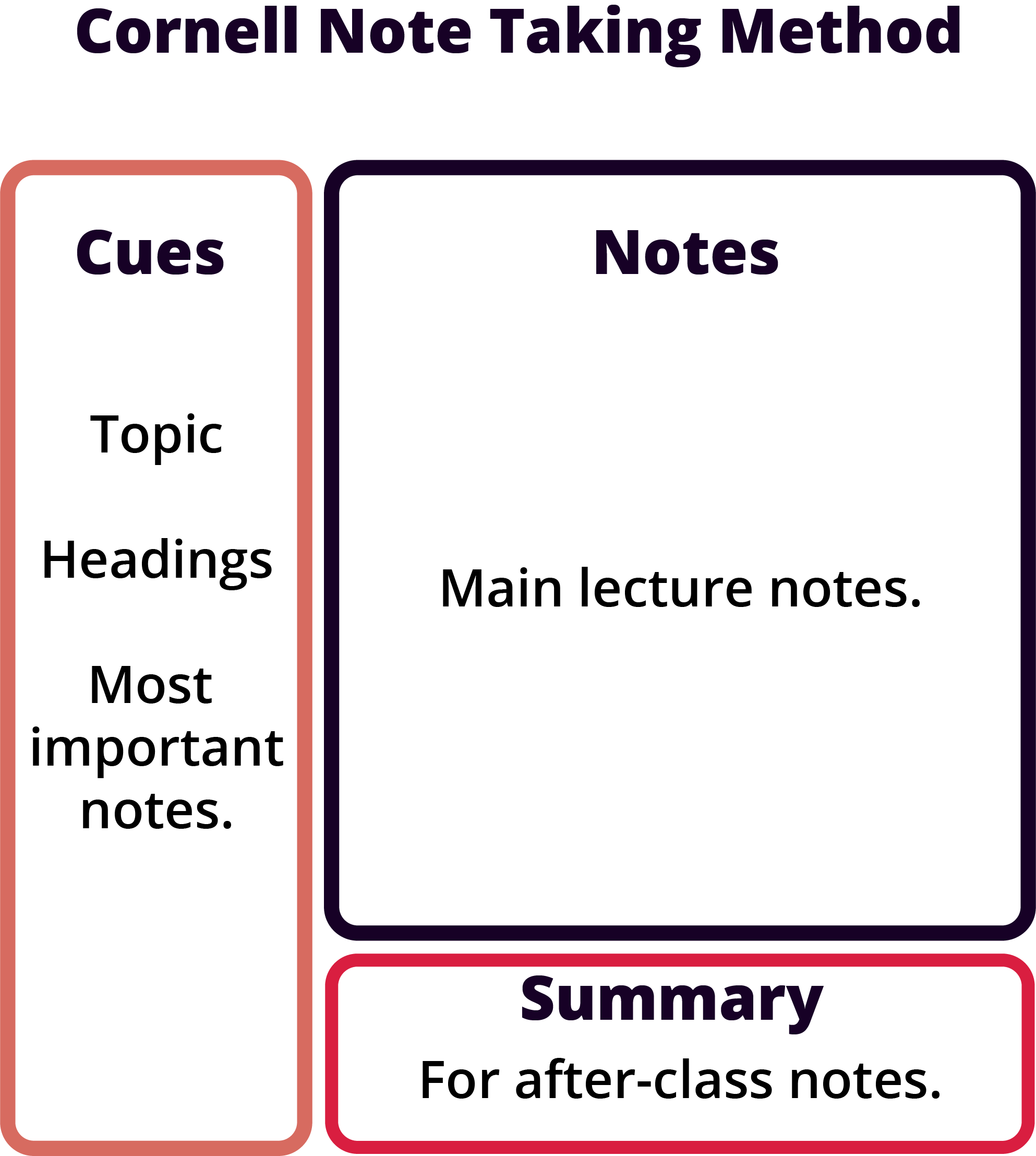
To be frank, there is not much empirical work on the effects of note-taking strategies, mostly because note-taking is functionally very complex and there do not exist any standard experimental paradigms that adequately account for this complexity. However, according to what we know about how the brain encodes visuomotor information, handwritten notes are likely a more effective way to increase information retention as opposed to taking notes on a computer.
9. Don’t Psych Yourself Out
For many studying can produce feelings of dread and anxiety.
Students can get discouraged when they don’t understand the material, which can lead to a cycle of negative reinforcement.
If you do not feel like you can learn the material, then why try?
Don’t ever go into a study session with the mentality “I cannot figure this out.” In doing so, you run the risk of making it actually true.
It is known that comparing oneself negatively to peers can demotivate and cause feelings of discouragement, which later lead to lower academic performance [27].
Similarly, ruminating on your perceived inability to grasp the material can further prevent you from effectively learning. You essentially set up a psychic wall and actively thwart attempts to engage in learning.
To avoid the downhill spiral of such catastrophic thinking, you need to reorient your attitude towards learning.
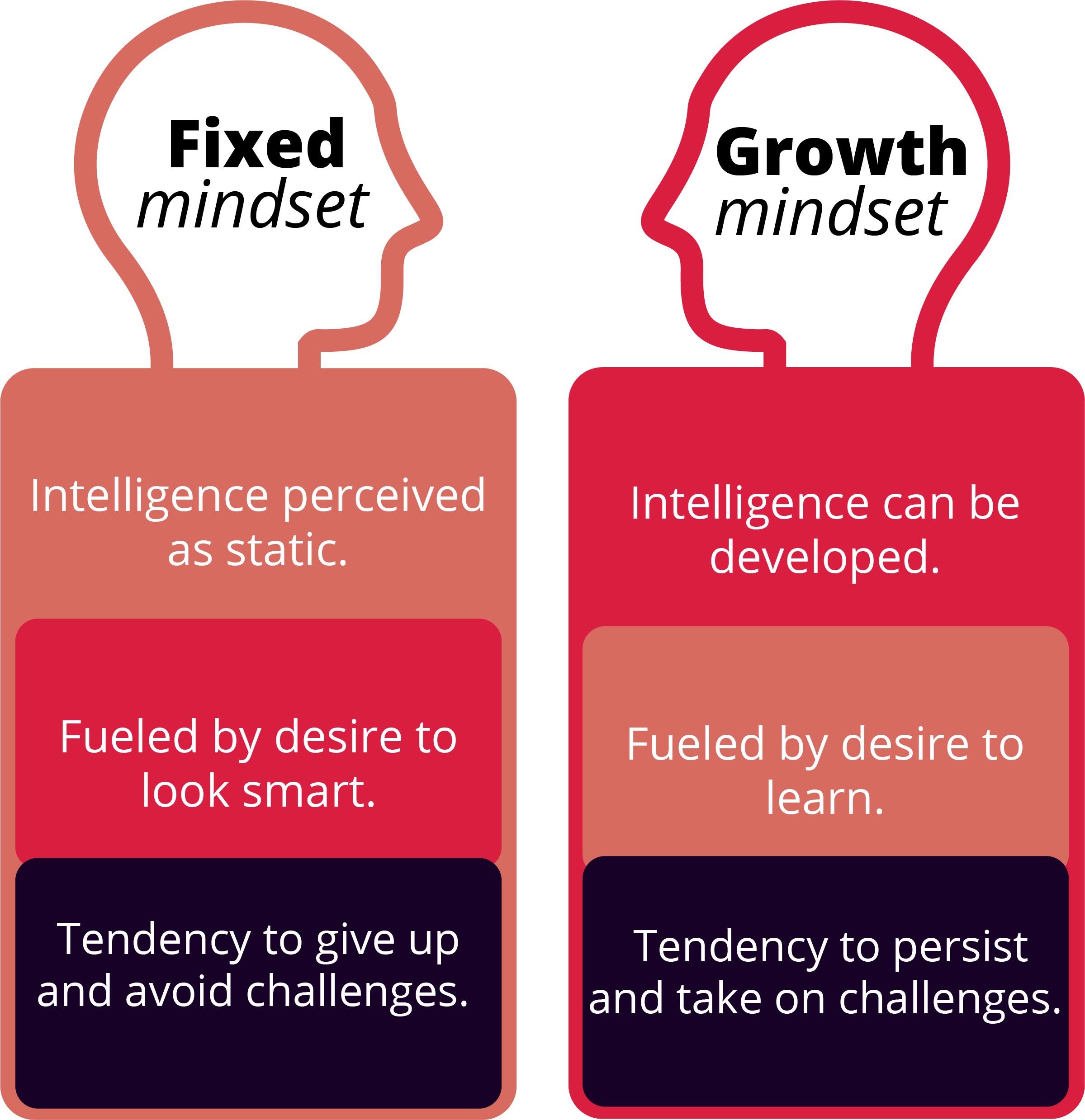
Don’t think of studying and learning as a competition or, at least, think of it as a competition between you and yourself rather than your peers.
Conclusions
We are not going to pretend that you can figure out an effective study strategy all in one night.
Figuring out how to learn properly takes a lot of time and effort, and is a continual process throughout one’s life.
Rather, our goal here is to provide you with a comprehensive account of the various scientifically-backed methods that will improve studying.
Again, you should not take this list as a checklist for study tasks.
Instead, view it as a guide for developing the right state of mind that is conducive to effective studying.
One final word on the purpose and value of learning. Many people throughout history have held that knowledge is only valuable insofar as it helps achieve our desires. Under this view, knowledge and learning have no intrinsic value themselves and are only valuable as far as they can help us get what we want.
We believe that this view is incredibly cynical and further contributes to an overall academic climate where students find themselves struggling to study.
Knowledge and learning should be seen as something that is good for their own sake, independent of how they help us achieve our desires.
Perhaps the most important part of effective learning is properly recognizing the purpose of learning and the value of knowledge in itself.
Learning simply for the sake of learning itself is one of the most powerful motivators.
- “Is It Serious?” American Test Anxieties Association, https://amtaa.org/is-it-serious/. Accessed 19 September 2019 [↑]
- American Psychological Association, American Psychological Association, https://psycnet.apa.org/record/1988-21660-001. Accessed 19 September 2019 [↑] [↑]
- Lachman, Sheldon J. “Learning Is a Process: Toward an Improved Definition of Learning.” Taylor & Francis, 12 Aug. 1996, https://www.tandfonline.com/doi/abs/10.1080/00223989709603535. Accessed 19 September 2019 [↑]
- Smith, Robert McCaughan. Learning How to Learn: Applied Theory for Adults. Open University Press, 1993. [↑]
- Ambroise, Susan A., and Richard E. Mayer. How Learning Works Seven Research-Based Principles for Smart Teaching. John Wiley, 2010. [↑]
- Burns, Matthew K. “Empirical Analysis of Drill Ratio Research: Refining the Instructional Level for Drill Tasks – Matthew K. Burns, 2004.” SAGE Journals, https://journals.sagepub.com/doi/10.1177/07419325040250030401. Accessed 19 September 2019 [↑]
- Glaser, R., and M. Bassok. “Learning Theory and the Study of Instruction.” Annual Reviews, 1989, https://www.annualreviews.org/doi/10.1146/annurev.ps.40.020189.003215. Accessed 19 September 2019 [↑]
- Coffield, Frank. Learning Styles and Pedagogy in Post-16 Learning: a Systematic and Critical Review. Learning and Skills Research Centre, 2004. [↑]
- Kolb, David A., and Alice Y. Kolb. The Kolb Learning Style Inventory 4.0: Guide to Theory, Psychometrics, Research & Applications.Jan. 2013, https://www.researchgate.net/publication/303446688_The_Kolb_Learning_Style_Inventory_40_Guide_to_Theory_Psychometrics_Research_Applications. Accessed 19 September 2019 [↑]
- “PsycNET.” American Psychological Association, American Psychological Association, https://psycnet.apa.org/record/1993-39276-001. Accessed 19 September 2019 [↑]
- “Why Students Fail Tests: 1. Ineffective Studying.” Chemical Engineering Education, http://journals.fcla.edu/cee/article/view/88038. Accessed 19 September 2019 [↑]
- Fields, R Douglas. “Changes in Brain Structure during Learning: Fact or Artifact? Reply to Thomas and Baker.” NeuroImage, U.S. National Library of Medicine, June 2013, https://www.ncbi.nlm.nih.gov/pmc/articles/PMC4476622/. Accessed 19 September 2019 [↑]
- Mozer, Michael C., et al. Predicting the Optimal Spacing of Study: A Multiscale Context Model of Memory.Jan. 2019, https://www.researchgate.net/publication/221619316_Predicting_the_Optimal_Spacing_of_Study_A_Multiscale_Context_Model_of_Memory. Accessed 19 September 2019 [↑]
- Nestojko, John F, et al. “Expecting to Teach Enhances Learning and Organization of Knowledge in Free Recall of Text Passages.” Memory & Cognition, U.S. National Library of Medicine, Oct. 2014, https://www.ncbi.nlm.nih.gov/pubmed/24845756. Accessed 19 September 2019 [↑]
- Bereiter, Carl, and Marlene Scardamalia. “Intentional Learning as a Goal of Instruction.” American Psychological Association, American Psychological Association, 1989, https://psycnet.apa.org/record/1989-98135-011. Accessed 19 September 2019 [↑]
- “The Impact of Intellectual Ability and Metacognition on Learning: New Support for the Threshold of Problematicity Theory.” Learning and Instruction, Pergamon, 21 Aug. 2006, https://www.sciencedirect.com/science/article/abs/pii/S0959475206000569?via=ihub. Accessed 19 September 2019 [↑]
- Quintana, Rafael, and Christian Schunn. “Who Benefits From a Foundational Logic Course? Effects on Undergraduate Course Performance.” Taylor & Francis, 10 May 2019, https://www.tandfonline.com/doi/full/10.1080/19345747.2018.1543372. Accessed 19 September 2019 [↑]
- Gadzella, Bernadette M., et al. “Prediction of Performance in an Academic Course by Scores on Measures of Learning Style and Critical Thinking – Bernadette M. Gadzella, Dean W. Ginther, G. Wendell Bryant, 1997.” SAGE Journals, https://journals.sagepub.com/doi/abs/10.2466/pr0.1997.81.2.595. Accessed 19 September 2019 [↑]
- Paillard, Thierry, et al. “Protective Effects of Physical Exercise in Alzheimer’s Disease and Parkinson’s Disease: A Narrative Review.” Journal of Clinical Neurology (Seoul, Korea), Korean Neurological Association, July 2015, https://www.ncbi.nlm.nih.gov/pubmed/26174783. Accessed 19 September 2019 [↑]
- Hillman, Charles H, et al. “Be Smart, Exercise Your Heart: Exercise Effects on Brain and Cognition.” Nature Reviews. Neuroscience, U.S. National Library of Medicine, Jan. 2008, https://www.ncbi.nlm.nih.gov/pubmed/18094706. Accessed 19 September 2019 [↑]
- van Dongen, Eelco V, et al. “Physical Exercise Performed Four Hours after Learning Improves Memory Retention and Increases Hippocampal Pattern Similarity during Retrieval.” Current Biology : CB, U.S. National Library of Medicine, 11 July 2016, https://www.ncbi.nlm.nih.gov/pubmed/27321998. Accessed 19 September 2019 [↑]
- Stickgold, Robert. “Sleep-Dependent Memory Consolidation.” Nature, U.S. National Library of Medicine, 27 Oct. 2005, https://www.ncbi.nlm.nih.gov/pubmed/16251952. Accessed 19 September 2019 [↑]
- Gillen-O’Neel, Cari, et al. “To Study or to Sleep? The Academic Costs of Extra Studying at the Expense of Sleep. – Semantic Scholar.” Undefined, 1 Jan. 1970, https://www.semanticscholar.org/paper/To-study-or-to-sleep-The-academic-costs-of-extra-at-Gillen-O’Neel-Huynh/1b3c5a7edb74b6c230be9be1a05ea46a26af48a1. Accessed 19 September 2019 [↑]
- “Sleep, Learning, and Memory.” Division of Sleep Medicine at Harvard Medical School, 2007, http://healthysleep.med.harvard.edu/healthy/matters/benefits-of-sleep/learning-memory. Accessed 19 September 2019 [↑]
- Slavin, Robert E. When Does Cooperative Learning Increase Achievement?Nov. 1983, https://www.researchgate.net/publication/232480281_When_does_cooperative_learning_increase_achievement. Accessed 19 September 2019 [↑]
- Mueller, Pam A., and Daniel M Oppenheimer. The Pen Is Mightier Than the Keyboard: Advantages of Longhand Over Laptop Note Taking, Apr. 2014, https://www.researchgate.net/publication/261839238_The_Pen_Is_Mightier_Than_the_Keyboard_Advantages_of_Longhand_Over_Laptop_Note_Taking. Accessed 19 September 2019 [↑]
- Rogers, Todd, and Avi Feller. “Discouraged by Peer Excellence: Exposure to Exemplary Peer Performance Causes Quitting.” Psychological Science, U.S. National Library of Medicine, Mar. 2016, https://www.ncbi.nlm.nih.gov/pubmed/26825105. Accessed 19 September 2019 [↑]
